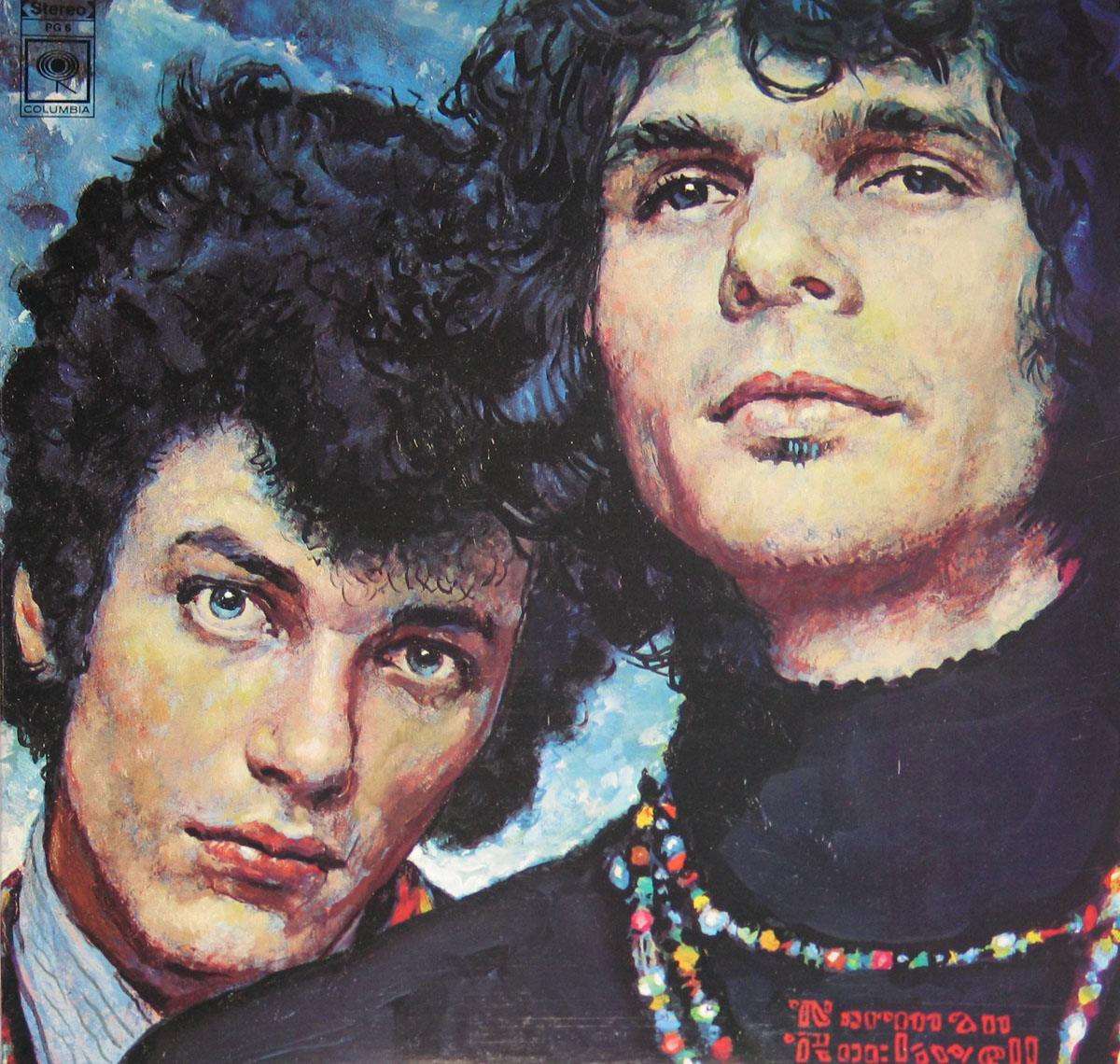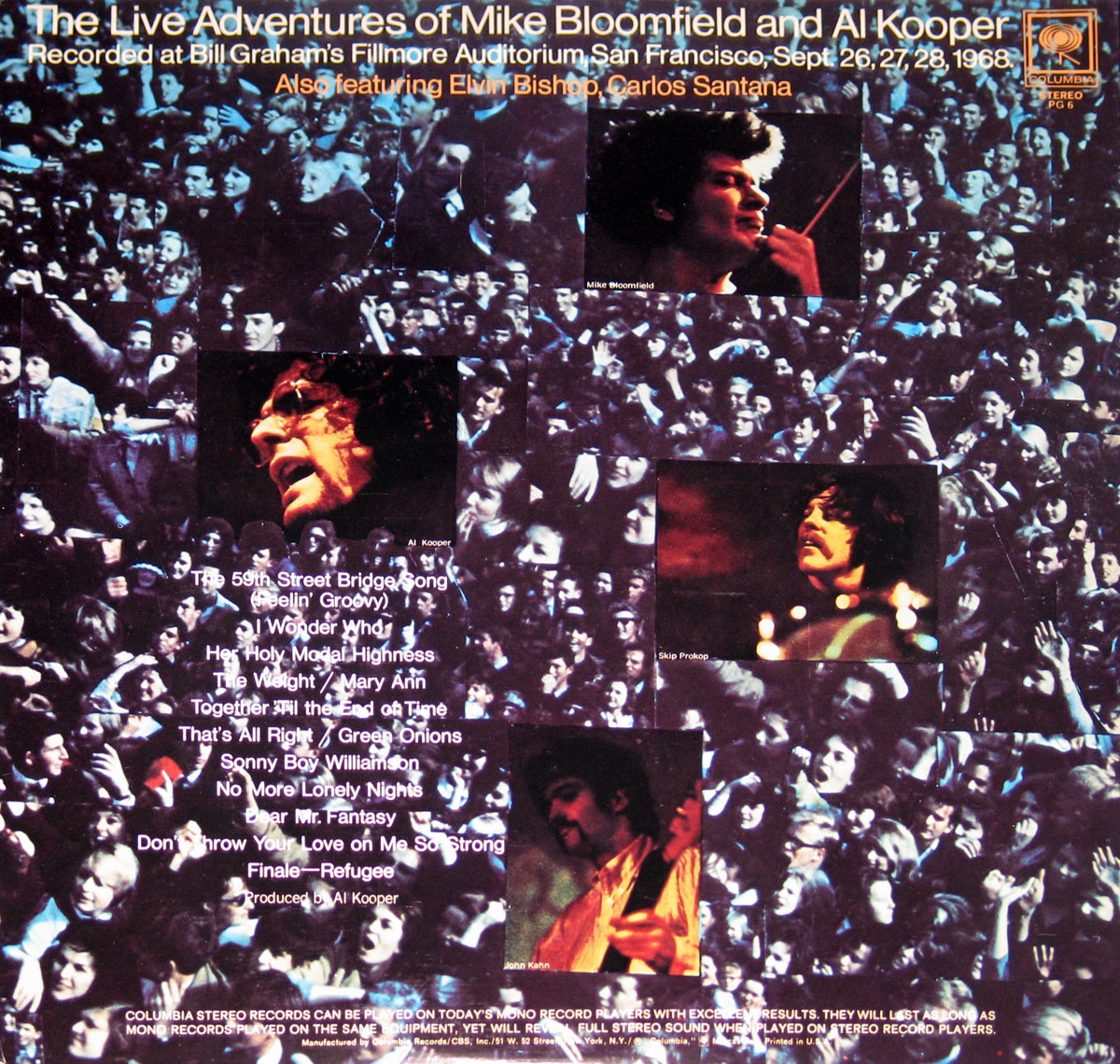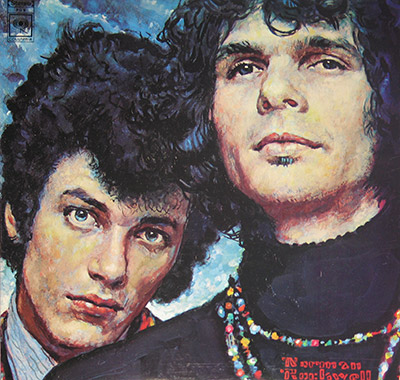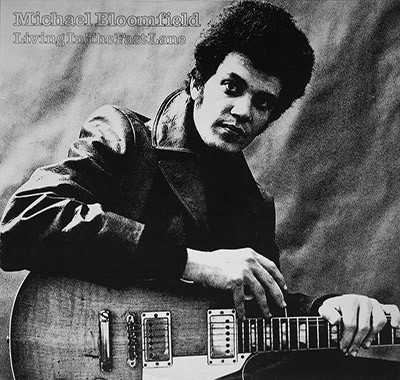The Live Adventures of Mike Bloomfield and Al Kooper Album Description:
"The Live Adventures of Mike Bloomfield and Al Kooper" is a fiery, impromptu celebration of blues and progressive rock, recorded live over three nights in September 1968 at San Francisco’s Fillmore Auditorium. Capturing the raw energy of a turbulent era, the double LP showcases Mike Bloomfield’s electrifying guitar work, Al Kooper’s soulful keys, and surprise guest appearances from Elvin Bishop and a young Carlos Santana. Despite lineup changes mid-performance and Bloomfield’s sudden departure, the album thrives on spontaneity, delivering unfiltered musical dialogue steeped in soul, improvisation, and countercultural grit.
In the shifting tides of late-1960s America, where political upheaval and cultural revolution redefined the national consciousness, "The Live Adventures of Mike Bloomfield and Al Kooper" emerged as a spontaneous combustion of soul, blues, and rock 'n' roll spirit. The summer of ’68 had just witnessed the assassinations of Martin Luther King Jr. and Robert Kennedy. The Democratic Convention in Chicago had exploded in violence. Music was no longer just sound—it was survival, it was resistance, it was raw expression. And in the crucible of Bill Graham’s Fillmore Auditorium in San Francisco, three nights in September captured all of that volatility on tape.
Musical Exploration
Bloomfield and Kooper weren’t playing to be perfect. They played to be real. Coming off the high of their previous collaboration, "Super Session", this live set dives even deeper into the bloodstream of American music. What unfolds is part jam session, part tent revival, part laboratory experiment. Bloomfield’s guitar doesn’t just sing—it hollers, moans, and testifies. Kooper’s organ snakes through each track like a holy spirit with a mischievous grin. And then there’s the seasoning: Elvin Bishop bringing his Chicago grit, and a young, then-unknown Carlos Santana firing lightning bolts across the stage.
Genre and Style
Firmly rooted in progressive rock and blues, the album sidesteps the polished, studio-precise productions that had begun to dominate the charts. Instead, this double LP swims freely between soul covers, down-home blues standards, and improvisational flights of modal fancy. From the grooving rendition of Simon & Garfunkel’s "The 59th Street Bridge Song" to the swampy thunder of "Don’t Throw Your Love on Me So Strong", every track breathes with the unfiltered spirit of live performance.
Controversies and Challenges
While the record is now hailed as a landmark, its creation was anything but smooth. Bloomfield, known for both brilliance and volatility, vanished after the first night due to chronic insomnia and nervous tension—a move that had become his signature by then. Kooper, caught off guard, scrambled to fill the void, even recruiting Santana for a spontaneous sit-in. The band had to adapt on the fly, altering arrangements and setlists. The result? A live album that’s less about perfection and more about capturing the spontaneous, imperfect magic of the moment.
Production and Engineering
Al Kooper, ever the architect of organized chaos, took the producer’s chair once again. Rather than sanitizing the material, he leaned into the grit and the feedback, letting the warts show alongside the wonder. Engineer Phil Macy had the unenviable task of recording multiple nights’ worth of material in a live setting—on analog gear—while chasing the ever-shifting energy of the band. The result is a sound that feels immediate, breathy, and warm, like the tube amps that powered Bloomfield’s guitar into myth.
The Recording Studio That Wasn’t
Unlike the cloistered sanctuaries of Sunset Sound or Columbia’s 30th Street Studio, this album wasn’t born in a studio—it was captured in the wild. The Fillmore Auditorium itself becomes an essential character here: its acoustics, its crowd noise, its West Coast electricity. You can almost feel the wooden floor vibrating beneath the weight of anticipation and echoing tube-driven reverb. The Fillmore wasn’t just a venue; it was a crucible of counterculture—and this album bottled its lightning.
How Four Titans Crossed Paths: The Making of *The Live Adventures of Mike Bloomfield and Al Kooper*
In the summer of 1968, the idea was simple but bold: capture the raw spontaneity of top-tier blues-rock musicians playing live, without the polish or predictability of the studio. Al Kooper, fresh off the success of his studio experiment Super Session, had already proven that impromptu collaborations could produce magic. That album featured Kooper and the mercurial guitar genius Michael Bloomfield in a relaxed, unstructured format—an idea that felt more like a jam than a commercial release. Inspired, Kooper envisioned a live follow-up that would bring that same spirit to the stage of San Francisco’s Fillmore Auditorium.
Kooper and Bloomfield, both alums of the Paul Butterfield Blues Band orbit, were natural creative partners despite their contrasting temperaments. Bloomfield’s brilliance on guitar was matched only by his fragility; his chronic insomnia and nervous tension often made him unreliable. Still, for the opening night of the Fillmore recordings in September 1968, the chemistry was electric. Backing them was another Butterfield alumnus: Elvin Bishop. Bishop, a Chicago bluesman with a thick, biting tone and deep roots in the genre, added muscle and familiarity to the band, grounding the proceedings in the earthy traditions of South Side blues.
But by the second night, chaos crept in. Bloomfield, overwhelmed by anxiety, vanished—leaving Kooper scrambling to keep the project alive. Enter Carlos Santana, then a local Bay Area sensation but not yet the global force he would become after Woodstock. Promoter Bill Graham, always with an ear for talent and an instinct for drama, offered Santana as a last-minute substitution. Santana’s fiery, Latin-tinged phrasing was unlike anything the others had brought to the stage. Instead of trying to replicate Bloomfield’s tone, he carved a new path entirely—adding a fresh, rhythmic urgency to the set.
In the end, the album became more than just a document of a live show. It was a snapshot of four musicians from different corners of the blues and rock universe colliding under unpredictable circumstances. Kooper’s steady hand as producer and performer held it all together. Bloomfield’s brief but brilliant appearance, Bishop’s grounding blues, and Santana’s unexpected explosion made for a recording that was messy, soulful, and unforgettable.
What began as a planned reunion turned into an unplanned summit. And in that uncertainty, something timeless was captured on tape—proof that the most transcendent musical moments often come not from control, but from chaos.




